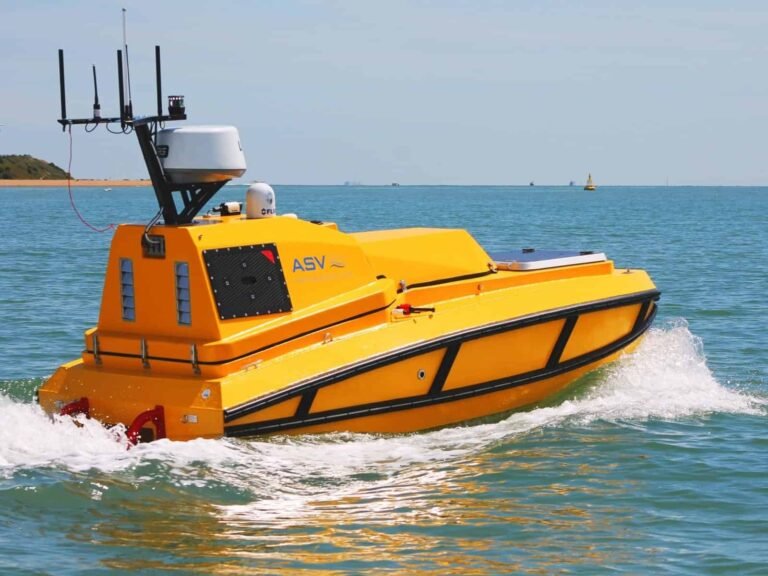An unmanned surface vessel (USV) is a revolutionary type of watercraft that operates on the surface of the water without any crew onboard. Controlled remotely or autonomously through advanced onboard systems, USVs have become an important part of modern naval operations and maritime technology. These vessels are designed to perform a wide range of missions, from surveillance and reconnaissance to offensive strikes, all while reducing risks to human operators.
USVs come in various sizes and capabilities. Some are small and agile, equipped with sensors and cameras for intelligence gathering, while others are larger and carry weapons or explosives for combat missions. The ability to operate either under remote control or autonomously makes USVs versatile tools for navies around the world. They can be deployed in dangerous or contested waters where sending manned ships would be risky.
One of the main advantages of unmanned surface vessels is the reduction of human risk. Since no crew is onboard, these vessels can perform high-risk tasks without putting lives in danger. This is particularly valuable in mine detection and clearance, where USVs can safely locate and neutralize underwater mines that threaten shipping lanes and naval fleets. In addition to mine countermeasures, USVs are also used for patrolling maritime borders, monitoring enemy movements, and collecting data in real time.
The military applications of USVs have grown significantly as countries seek to strengthen their naval capabilities with advanced technology. Armed USVs can carry explosives or missile systems, enabling them to conduct precise attacks against enemy ships or coastal installations. For example, Taiwan’s Sea Shark 800 is an unmanned surface vessel capable of carrying up to 1,200 kilograms of explosives and striking targets as far as 500 kilometers away. This new development highlights how USVs are becoming key players in defense strategies, offering stealth, speed, and firepower without risking soldiers’ lives.
Cost efficiency is another important benefit of USVs. Compared to manned ships, unmanned vessels are typically less expensive to build, operate, and maintain. This cost advantage allows navies to deploy larger numbers of USVs for various missions, creating a force multiplier effect. USVs can operate for extended periods without the limitations of crew fatigue or life support, providing continuous surveillance and defense in critical areas.
Despite their many advantages, unmanned surface vessels face technical and operational challenges. Reliable autonomous navigation in complex and dynamic maritime environments remains difficult. USVs must be able to handle rough seas, avoid obstacles, and adapt to changing weather conditions while maintaining communication links with control centers. These communication systems can be vulnerable to jamming or hacking, which could compromise the vessel’s mission.
Legal and ethical questions also arise with the use of armed unmanned vessels. Issues such as accountability, rules of engagement, and the potential for unintended escalation in conflicts are subjects of ongoing debate among military experts and policymakers. Clear guidelines and international agreements are needed to regulate the deployment and use of USVs in warfare.
Several countries have developed or are developing their own unmanned surface vessels. The United States has created the Sea Hunter, an autonomous USV designed for anti-submarine warfare and long-range surveillance. Israel’s Protector USV is a remote-controlled armed vessel used for patrol and security missions. South Korea’s Tactical Unmanned Surface Vehicle focuses on coastal defense and mine hunting operations. Each of these examples showcases the growing importance of USVs in modern naval forces.
Future trends in unmanned surface vessel technology point toward greater autonomy and enhanced capabilities. Artificial intelligence and machine learning are expected to improve USV navigation, target identification, and decision-making. Swarm tactics, where multiple USVs operate together in coordinated missions, could overwhelm enemy defenses and provide new strategic advantages. Integration with other unmanned systems, such as aerial drones and underwater vehicles, will create multi-domain operations that enhance maritime security and combat effectiveness.
As warfare continues to evolve with advances in technology, unmanned surface vessels represent a significant leap forward in naval power. Their ability to conduct dangerous missions with stealth and precision, combined with cost savings and operational flexibility, makes them indispensable tools for the navies of the future. The development and deployment of USVs will likely shape the balance of power on the seas and redefine maritime security strategies in the years to come.







